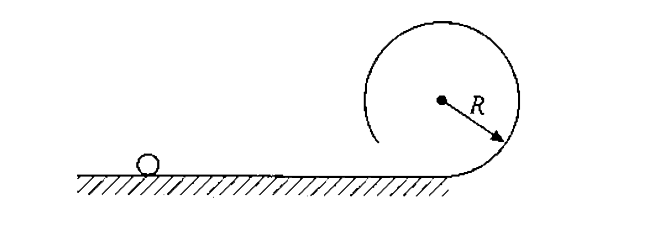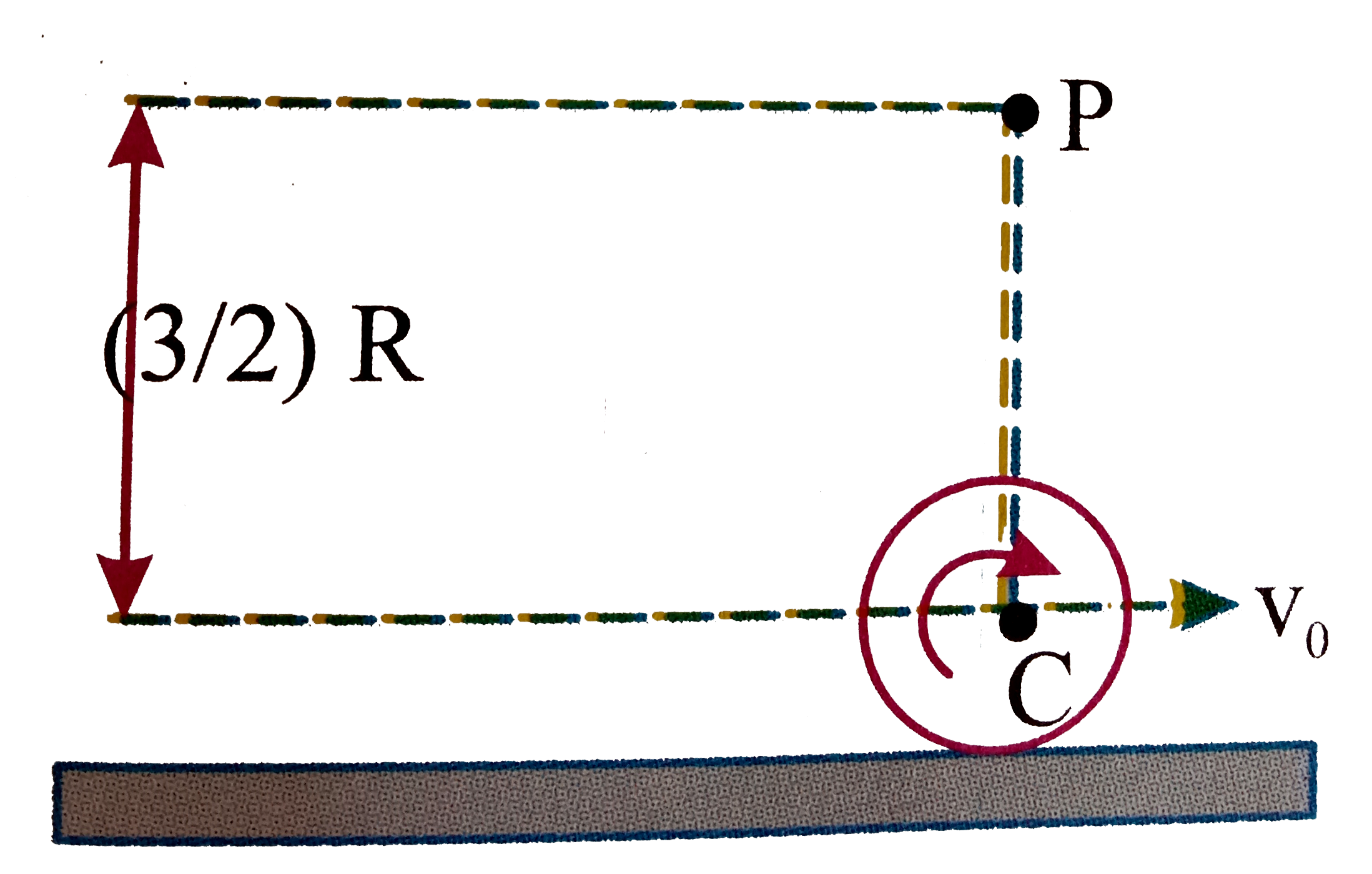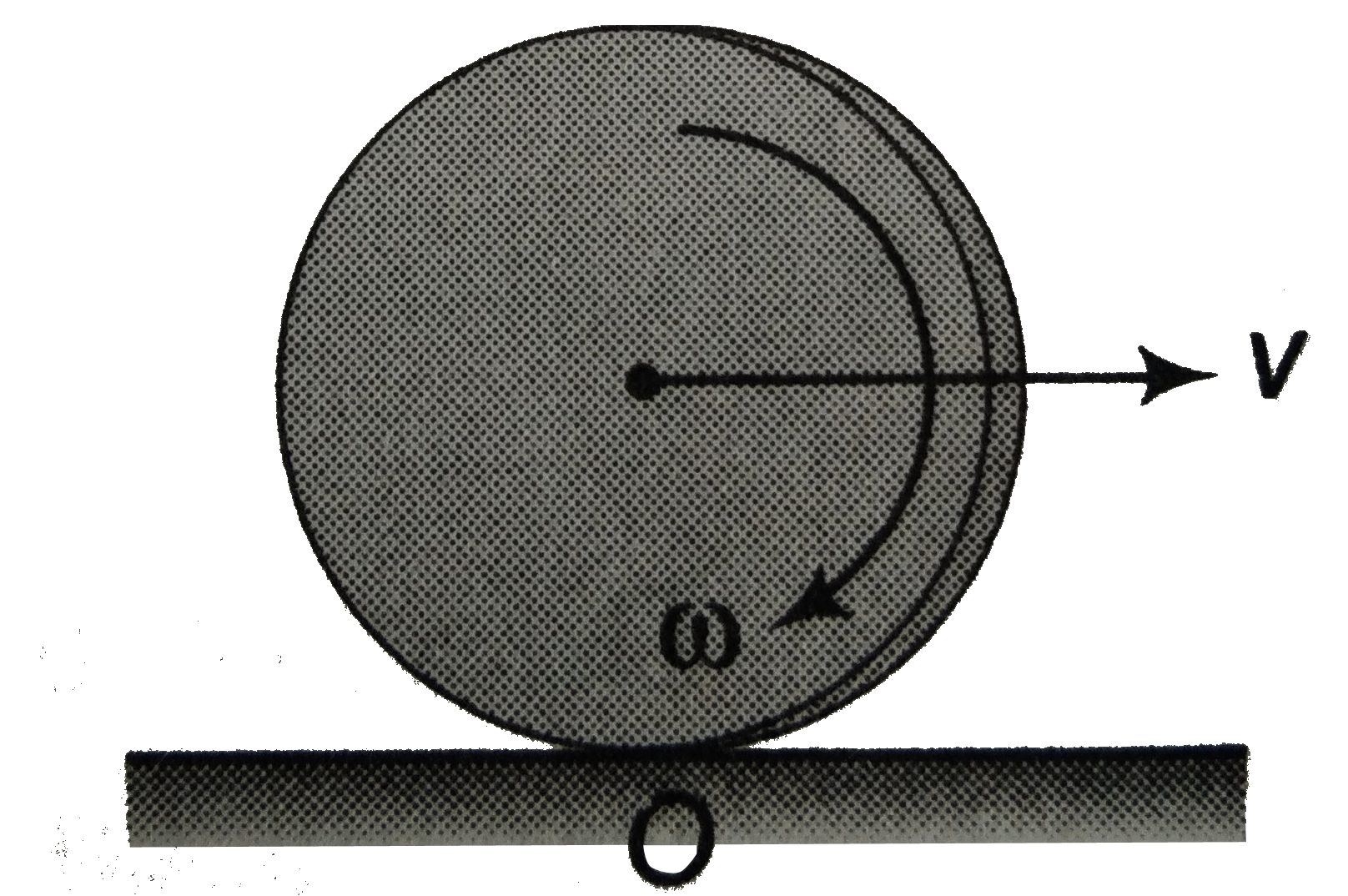A symmetrical body of mass M and radius R is rolling without slipping on a horizontal surface with linear speed v. Then its angular speed is
v/R
Continuously increasing
Dependent on mass M
Independent of radius (R)
The correct Answer is:C
To solve the problem of finding the angular speed (ω) of a symmetrical body of mass M and radius R that is rolling without slipping on a horizontal surface with a linear speed (v), we can follow these steps:
1. Understanding Rolling Without Slipping:
- When a body rolls without slipping, the point of contact with the ground does not slide. This means that the linear speed of the center of mass (v) is related to the angular speed (ω) of the body.
2. Using the Relationship Between Linear Speed and Angular Speed:
- The relationship between the linear speed (v) of the center of mass and the angular speed (ω) can be expressed as:
v=R⋅ω
- Here, R is the radius of the body.
3. Rearranging the Equation to Solve for Angular Speed:
- To find the angular speed (ω), we can rearrange the equation:
ω=vR
4. Conclusion:
- Therefore, the angular speed (ω) of the symmetrical body is given by:
ω=vR
Final Answer:
The angular speed of the body is vR.
---
- When a body rolls without slipping, the point of contact with the ground does not slide. This means that the linear speed of the center of mass (v) is related to the angular speed (ω) of the body.
- The relationship between the linear speed (v) of the center of mass and the angular speed (ω) can be expressed as:
v=R⋅ω
- Here, R is the radius of the body.
- To find the angular speed (ω), we can rearrange the equation:
ω=vR
- Therefore, the angular speed (ω) of the symmetrical body is given by:
ω=vR
The angular speed of the body is vR.
Topper's Solved these Questions
- ROTATIONAL MOTIONBOOK - ERRORLESS CHAPTER - ROTATIONAL MOTIONEXERCISE - Practice Problems (Problems based on rolling on incline plane)
28 Videos
- ROTATIONAL MOTIONBOOK - ERRORLESS CHAPTER - ROTATIONAL MOTIONEXERCISE - Practice Problems (Problems based on motion of connected mass)
10 Videos
- ROTATIONAL MOTIONBOOK - ERRORLESS CHAPTER - ROTATIONAL MOTIONEXERCISE - Practice Problems (Problems based on angular momentum)
16 Videos
- NEWTONS LAWS OF MOTIONBOOK - ERRORLESS CHAPTER - NEWTONS LAWS OF MOTIONEXERCISE - Self Evaluation Test
16 Videos
- SIMPLE HARMONIC MOTIONBOOK - ERRORLESS CHAPTER - SIMPLE HARMONIC MOTIONEXERCISE - simple Harmonic Motion
21 Videos
Similar Questions
A small spherical marble of mass m and radius r is rolling without slipping on a rough track with speed v.The track further is in the shape of a vertical circle of radius R as shown in figure-5.144. With what minimum linear speed the marble is rolling so that it completely goes round the circle on the circular part of track.

View SolutionRolling (with and without slipping) on horizontal and inclined surface
View Solution
Knowledge Check
A solid sphere of mass m and radius R rolls without slipping on a horizontal surface such that vc.m.=v0.
AThe kinetic energy of rotation is 15mv20.BThe total kinetic energy is 710mv20.CThe mechanical energy (assume the ground as reference) is mgR+710mv20.DAll options are correct.A loop of mass M and radius R is rolling on a smooth horizontal surface with speed 'v'. It's total kinetic energy is
A1/2Mv2B3/2Mv2CMv2D1/2MR2ω2A uniform circular disc of mass M and radius R rolls without slipping on a horizontal surface. If the velocity of its centre is v0, then the total angular momentum of the disc about a fixed point P at a height (3R)/2 above the centre C.
 Aincreases continuously as the disc moves awayBdecreases continuously as the disc moves awayCis always equal to 2MRv0Dis always equal to MRv0
Aincreases continuously as the disc moves awayBdecreases continuously as the disc moves awayCis always equal to 2MRv0Dis always equal to MRv0
A sphere of mass m and radius r rolls without slipping on the horizontal surface with speed v. During its motion it encounters a fixed rectangular block of height h=r4 as shown. The collision is inelastic. Find the angular speed of sphere immediately after collision. The body rolls without slipping.
View Solution
A cicular disc of mass m and radius R is set into motion on a horizontal floor with a linear speed v in the forward direction and an angular speed ω=vR in clockwise direction as shown in figure. Find the magnitude of the total angular momentum of the disc about bottom most point O of the disc.
View SolutionAssertion: A disc rolls without slipping on a horizontal surface and the linear speed of its centre of mass is v. The rotational speed of the particles on its rim at the top of the disc will be 2v.
Reason: The disc rolls as if it is rotating about the point of contact with the horizontal surface.
View SolutionA particle of mass 'm' is attached to the rim of a uniform disc of mass 'm' and radius R. The disc is rolling wihtout slipping on a stationery horizontal surface as shown in the figure. At a particular instant, the particle is at the topmost position and centre of the disc has speed v0 amd its angular speed is ω. Choose the correct option (s).
View SolutionA solid cylinder of mass M and radius R rolls without slipping on a flat horizontal surface. Its moment of inertia about the line of contact is ?
View Solution

